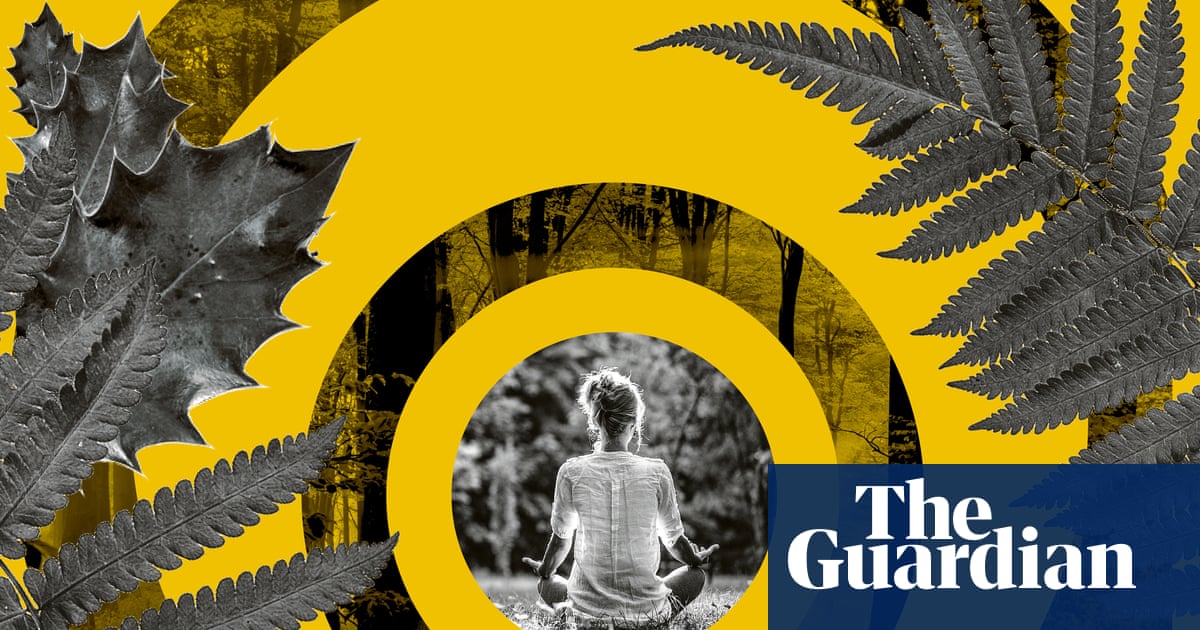
At this time of year, the sun rises a little after 6am. My alarm goes off half an hour before. Without disturbing my sleeping babies, I smuggle myself downstairs, fix a flask of tea and, booted and scarfed, head out into the dewy darkness for the forest.
Through hazel and holly and ash and yew, over a treadless carpet of moss and wild garlic, only a few feet into the forest is enough to be submerged. Deeper into the green, I look for my sit-spot: a three-trunked ash, perfectly shaped to hold me cross-legged, nature-cradled, in that still, dark world. The sun begins to rise through the trees, revealing everything to be sharper, more definite, yet more unreal. It’s the most immersive show in the world and it happens for free every day. I go back home once the sun has fully risen, wake the house and start the day, privately smiling that I have infiltrated a hidden part of the morning that is mine alone.
Shinrin-yoku, or forest bathing, has become one of the most regularly ridiculed and deliberately misunderstood practices in the health and wellbeing pantheon. Mention it in cynical company and someone will make a hocking sound, saying something like: “Forest bathing, fnuh – don’t you mean a walk in the woods?” OK, fine, sort of, yes. But language is important, and the concept of bathing in the forest, engaging all your senses in a meditative way, concentrating on the healing offered by nature, is more powerful than “a walk in the woods”. So save it for someone who gives a bombaclat – I’m off to lower my cortisol levels and blood pressure, and reduce the chances of coronary heart disease and type 2 diabetes.
Those are just some of the “health benefits of the great outdoors”, according to a recent meta-analysis in the journal Environmental Research that looked at 143 previous studies from 20 countries.
Of course, as with almost all positive, natural, healthy practices, there is always someone trying to turn a profit, with some “shinrin-yoku practitioners” charging people £30 a head to go for a walk. Clearly not everybody running a forest bathing club or leading meditative walks is a fraud, but it’s easy to see how scammers could profit. Far better to just get out and reconnect with humanity’s natural habitat yourself. As the highest priest of nature, William Wordsworth, said, while banging on about how shite reading was: “Come forth into the light of things, Let nature be your teacher.”
Forest bathing makes you feel better. It has changed my life. I grew up indoors, my inner-city working-class family being extremely averse to the outside. Why would you go out in the dirt and the wet when you could see it all on The Darling Buds of May? It has taken me until my 30s to develop an appreciation for the outdoors beyond being smashed and glittered in a field in Somerset listening to LCD Soundsystem play.
Discovering that there are many physical as well as psychological boons to spending time in nature is really of little surprise, given the common trope of nervous women who could possibly be killed by being startled, being sent out of the city to “take the air”. The romantic poets certainly got the gist, presenting going for a walk as something noble, even heroic.
Just as it was back in the 19th century, the forest is most easily accessed by those with the privilege of proximity. I have that privilege. My house backs on to an iron-age forest, so within minutes of walking out of my door I am engulfed in wilderness. For the urban would-be forest bather, I imagine it can feel impossible to find the time to get out of the city. But we can forget that we’re never that far from green spaces – the Victorians made sure of that. If you can bring yourself to steal that extra hour pre-dawn, you can find yourself alone in parkland – maybe not the deepest forest bath, but enough to feel immersed and revived.
Source: TheGuardian
